To celebrate the end of 2021, we are looking back at some of our best articles this year.
Originally published this past March: The game is now available on Xbox, PlayStation and PC. Changes have been made to the collection since launch and DLC is coming but this review is being presented as it was originally.
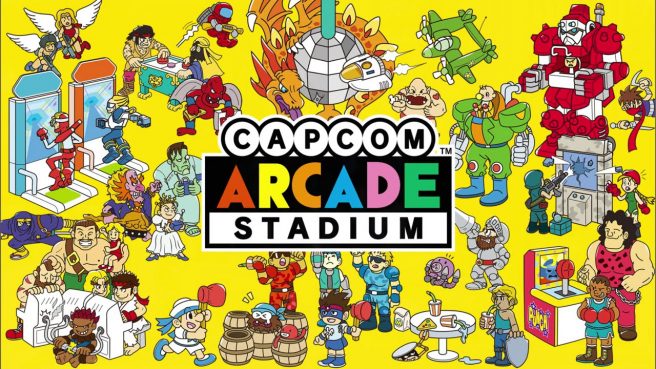
Capcom surprised everyone at The Game Awards with the announcement of Capcom Arcade Stadium, a collection of 30+ games from Capcom’s arcade library. The collection has a number of features and includes some games getting a home release for the first time.
In order to make this review easier, I have broken everything into sections. First I will discuss my initial impressions and what features this collection has and Then I will discuss the games. Rather than go by the packs Capcom has used to divide the games, I will divide them into four sections, Shmups, Platformers, Action and Brawlers. Afterwards I will give my final impressions on what could have been better and what my favorite game from each category was.
Initial impressions
Capcom Arcade Stadium has wide variety of display options for the games. You can choose to have the game be played in a virtual cabinet to replicate the arcades for instance, and there are a number of ways to expand on that as well. You can choose the color of the cabinet, the size and the style and you can change the background. Using the arcade set up is pretty neat, and there is even a visual of the coin being inserted into the cabinet. If you choose not to use the arcade look however, there are a few display options to choose, including one that will stretch a vertical display to fit your screen. I do not recommend that one though, as it is not very good to look at.
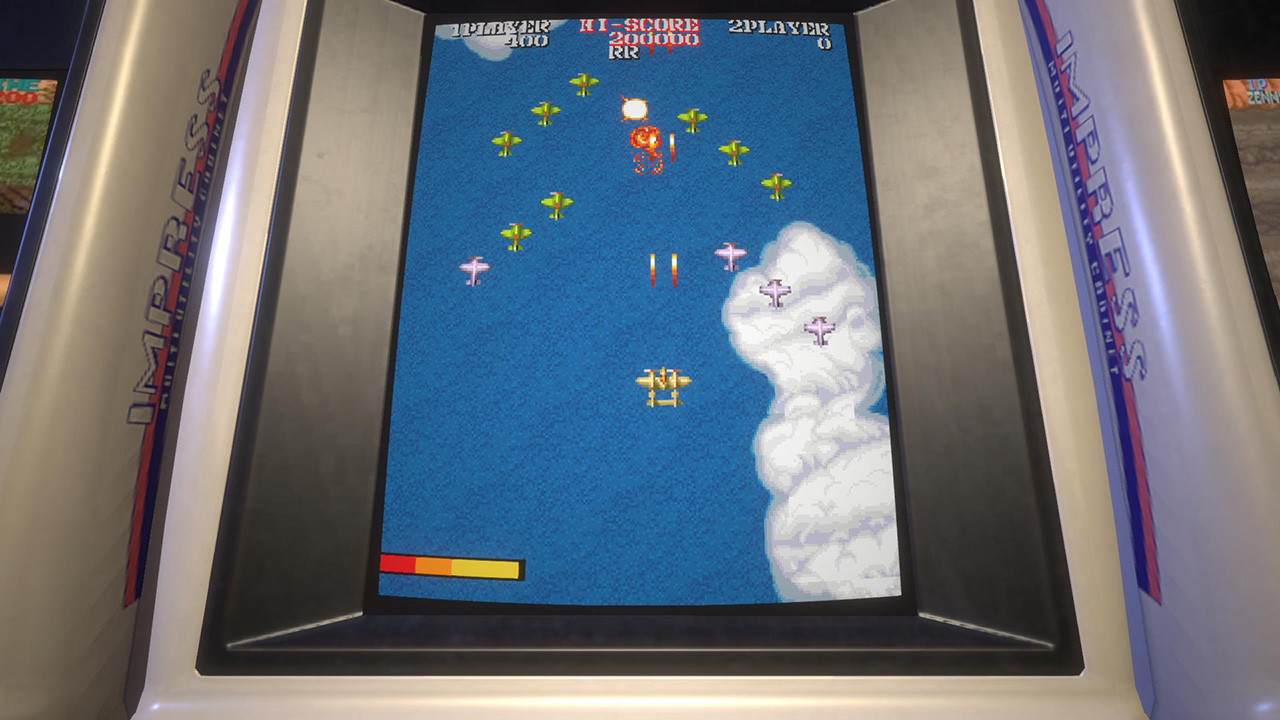
The collection has a lot of other neat surprises though and these include modern emulation features such as real-time rewinding, changing your game speed to better suit your style, and adjusting the game’s difficulty. I was pretty impressed with how everything worked I must say, and that gave me high hopes for the collection. But as to the games, I must make note of something else and that is that the collection has local multiplayer only and this may be a deal breaker for some of the games, especially the brawlers.
Before I talk about the games, there is something else to address and that is what I will call Bionic Commando Syndrome. This is the case of an arcade game having a console port that was changed for the better and I will point out instances of this having happened. With that said, let us begin.
Shoot ’em ups (Shmups)
Vulgus (1984)
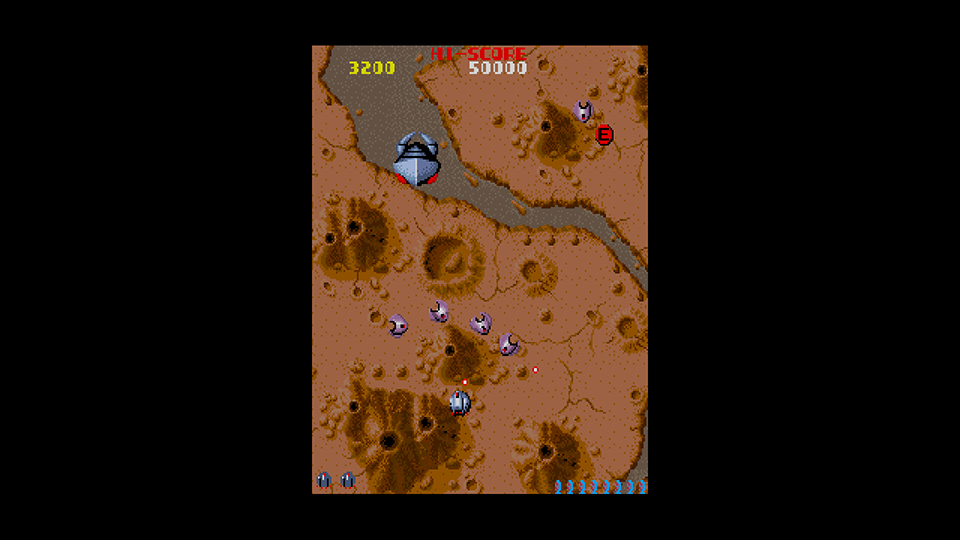
Vulgus is an interesting game. The earliest game on the collection, it is rather basic if I am being honest. This shmup does not have much to offer really, but what makes it notable to me is that you can see where some ideas from later Capcom shmups have come from. This is a one-and-done as far as I am concerned, but it is worth playing that one time for historical context.
1942 (1984)

1942 is the beginning of Capcom’s 1940 series of shmups, and what a legacy it has left behind. The games kept getting better and better, but that does mean that 1942 looks much worse in comparison. It is not bad per se, but just feels so bland compared to some of the better shmups Capcom later put out in the arcades. Music-wise, there is nothing special here, which is something the sequels would fix. Like with Vulgas, you can see the roots of greatness here, but this game had not reached its potential yet. I also want to point out that 1942 was one of the games ported disastrously to the NES by Micronics and stands out as one of the worst arcade ports of Capcom games.
1943: The Battle of Midway (1987)

1943 is included free with the collection download, and I think it is a rather good choice to include. I have written before about my love of 1943: The Battle of Midway on this site. I do admit though, that part of my love for the game is purely driven by my nostalgia for the game. 1943’s home conversion for the NES was one of only two shmups I owned for a long time, along with Blazing Lazers on the TurboGrafx, and thus I developed a love of the game. The thing is, 1943: The Battle of Midway is a vastly improved sequel over 1942. The music is far superior and the gameplay mechanics have been greatly fine-tuned. The action flows far better here, and you can lose yourself in this game. I do need to mention two other details though, one of which is the NES port. Unlike 1942, this game’s NES port was handled by Capcom themselves and is a very good port, even if the arcade visuals could not be matched perfectly. The other detail is that the version included here on Capcom Arcade Stadium is one of the titles that had issues with its vertical displays. If you are using a vertical screen, the game does not fit the display perfectly and the various screen options, in general, do not work well with this title. A shame, because the game itself is rather good.
Section Z (1985)
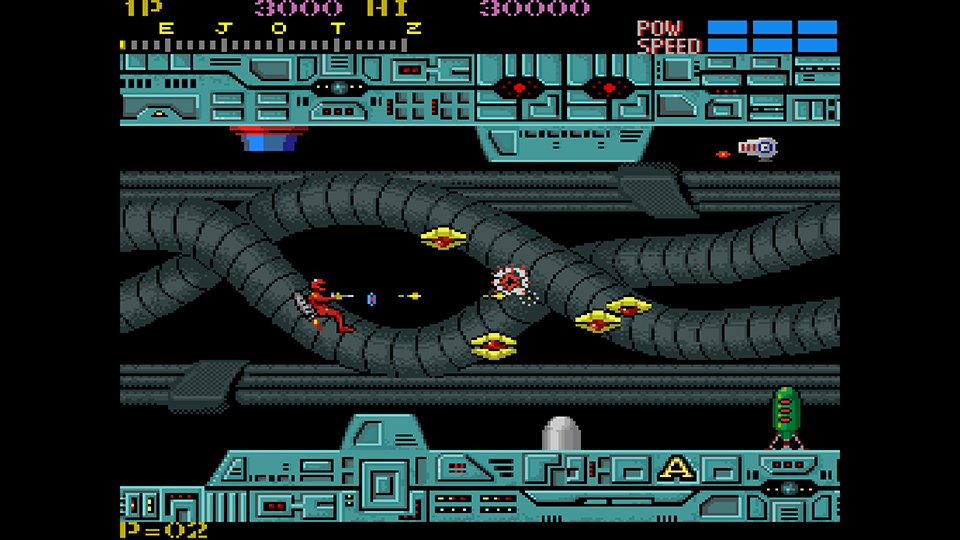
Section Z is a different sort of shmup that sees you needing to press buttons to turn around and shoot in a different direction. This control method is actually one Capcom would use in later games, including some of the brawlers included in this collection. The controls may take a few moments to get used to, but with patience, it becomes worth playing. What is notable about Section Z is that it is an example of Bionic Commando syndrome, with an NES port that was very much improved. The controls were simplified and streamlined, and the shmup elements were combined with exploration elements similar to a Metroidvania. The arcade game is not bad by any means and deserves a play, but the NES version was just better as far as I am concerned.
Legendary Wings (1986)
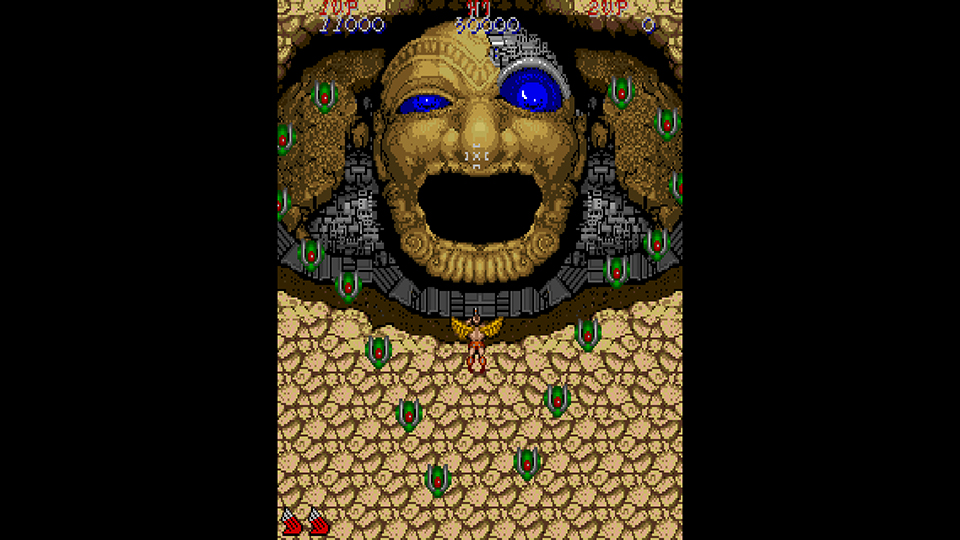
Legendary Wings is an amazing game, that has some of the best vertical and sidescrolling shooter elements ever…..if we were talking about the NES version. Legendary Wings is sadly a case of just how severe Bionic Commando syndrome can be. The arcade game is a complete disaster, with difficulty being near impossible in some areas. The walking sections are a mess, and your large hitbox and the way powerups work in this game all combine to create a complete disaster that is best avoided. The NES version may have downgraded graphics, but every other issue was fixed. The powerups were handled better there, the sidescrolling stages were reworked, and the difficulty was more manageable, including a better hitbox. The arcade version, however, is a pass.
Forgotten Worlds (1988)

Forgotten Worlds is one of the shmups I was concerned about, given how the controls worked in the arcades and how notorious the console ports were. The Genesis/Mega Drive version tried its best but sadly could not match the arcade release. The arcade game used a rotary controller to adjust your character, which was not possible to replicate on consoles at the time. The result was a slightly reworked game that still was hampered by the source version. For the Capcom Arcade Stadium release, Capcom made the smart move to add new control options to handle the game better. You can use the right analogue stick to maneuver the character, but the best choice is to use the shoulder buttons to do so as it frees you up to use your weapons. This is not ideal but manages to be sufficient. Forgotten Worlds is a great shooter, though rather difficult, and one I highly recommend checking out.
1941: Counter Attack (1990)
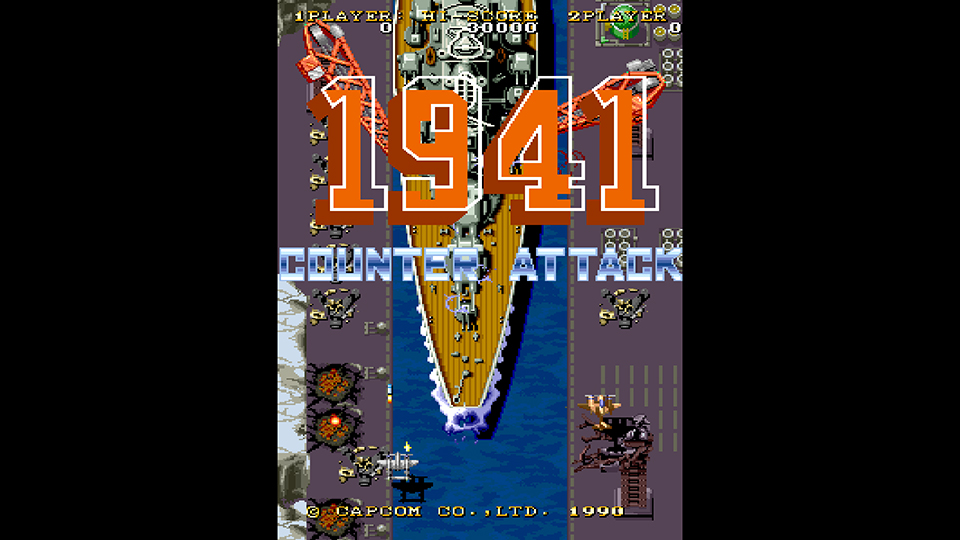
Carrier Air Wing (1990)
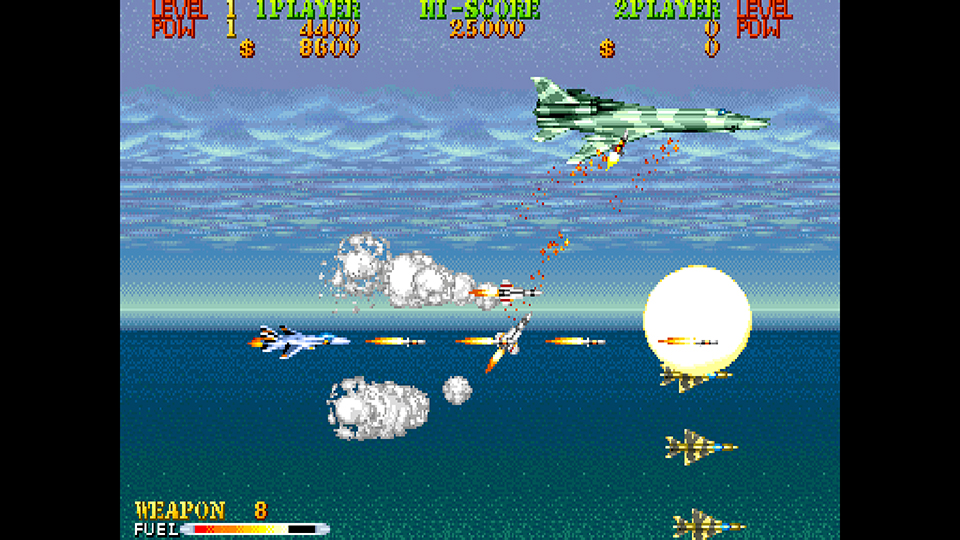
Carrier Air Wing is a spiritual sequel to U.N. Squadron, itself an adaptation of the anime and manga Area 88. The game began life as a full sequel but due to rights issues became a new IP instead. Many have been excited to try this for the first time but I must say that it is rather generic. This is not a bad game, but it wants to be like U.N. Squadron but comes off as an inferior clone. The music is not as good, the weapons are not as good and the overall gameplay just feels like it is trying too much. This is nowhere near as creative as U.N. Squadron and just comes off as a decent but not particularly noteworthy shmup.
Varth: Operation Thunderstorm (1992)
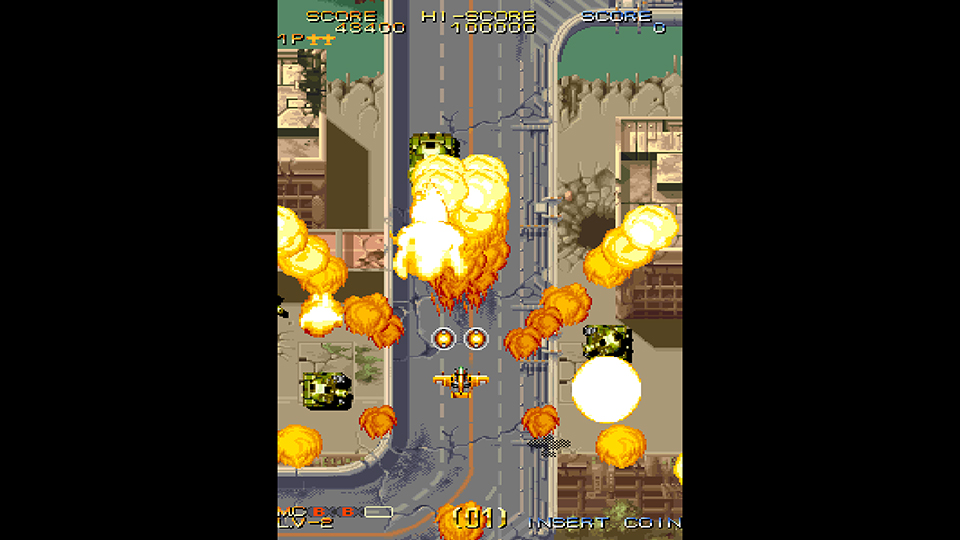
Varth was the biggest surprise of the shmups for me. I had never played it before and did not know what to expect, but was blown away by the actual experience. This is a long game full of stages, but the stages never take too long. There are two satellites that you can have either in front of you as a shield or orbiting you to deflect shots, and the latter is a far better choice. There are a great variety of weapons to use here, and the game has a nice amount of cameos from other Capcom franchises like Street Fighter. The use of bombs is perfect here, and the autofire options are well handled. Varth: Operation Thunderstorm feels like Capcom’s answer to Raiden and is a must-play. The bosses are creative, the music is great and the challenge is perfect. If you can only play one shmup from this collection, make it Varth: Operation Thunderstorm
19XX: The War Against Destiny (1995)
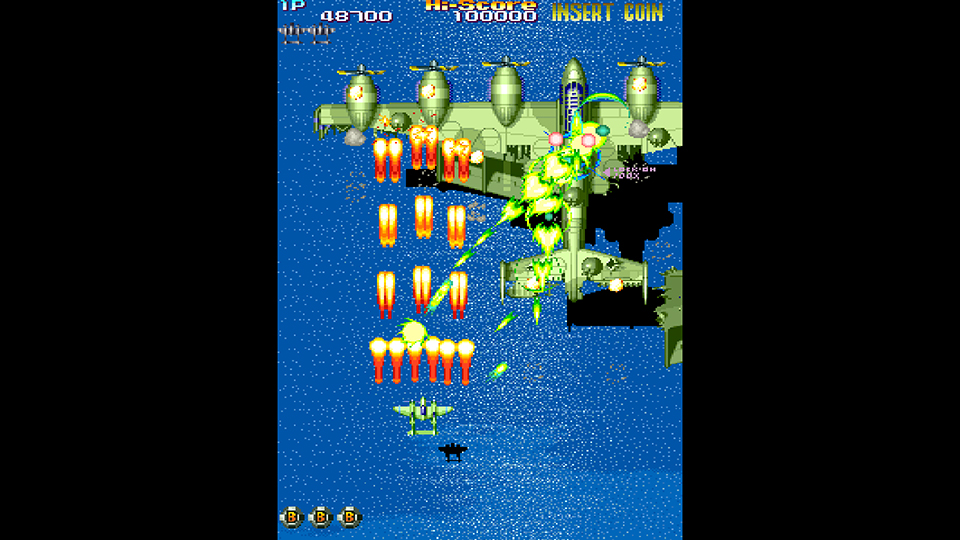
19XX makes its home system debut here and lures you in by pretending at first to go back to the series roots before quickly amping up the ideas from 1941, flowing into a full sci-fi setting. There are a wide variety of stages and new mechanics here, such as a rival plane you will need to deal with in various stages. This game also marks the shift towards bullet hell shooters even if the game is not a bullet hell as we think of them. This is the first game in the series to not have a life bar, and also the first game to have multiple planes to choose from. There is a ton of replay value here and the emulation quality is perfect, as are the Tate mode options. There is great music here as well, and the visuals are likewise outstanding. It’s about time this game got a home port, and I enjoyed my first time playing this. This is easily the second-best shmup in this collection.
Giga Wing (1999)
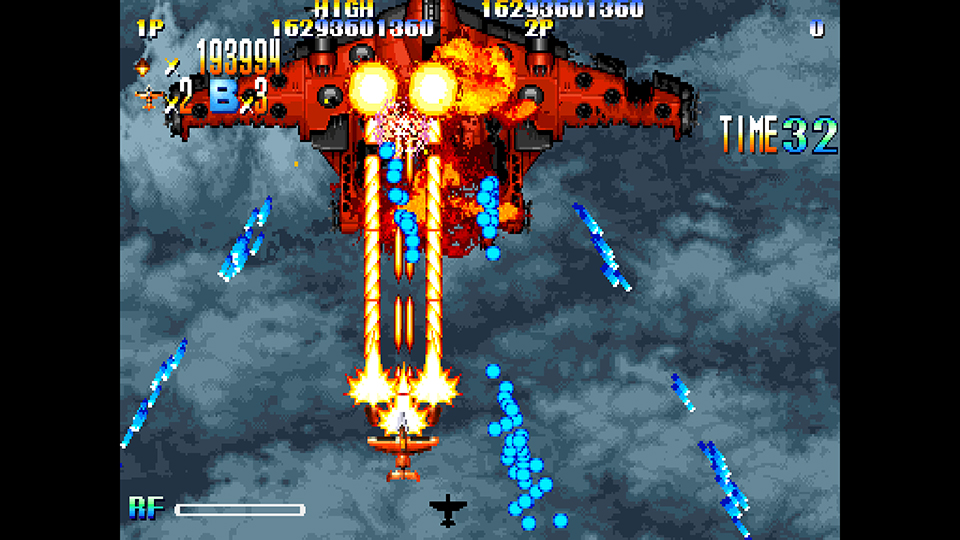
Giga Wing is when Capcom went into full bullet hell mode and has its own neat mechanics. The game allows you to charge up and create a barrier to defend yourself and reflect attacks and this is something you need to do in order to survive. The game is not easy by any means and is one of the most intense Capcom shooters of all, if not the most. There are a lot of good ideas here, and there is a lot of strategy involved in beating the game. The levels are excellent and the music and bosses are standouts in this collection. Sadly the game has an issue with input lag and unlike other instances in the collection, it is very noticeable here. The same issue was on the Dreamcast port, and I wonder if this is an issue with the arcade version itself.
1944: The Loop Master (2000)

The final game in the series, 1944 is good but not as good as 19XX. The sci-fi elements are downplayed in favour of a WW2 setting again, the life bar is back and the game is far more conventional. This is not to say it is a bad game by any means and is far better than many other shmups out there, it just feels like a step back after how different 19XX was. The visuals do not stand out as much, and the music is full of odd choices. It is still worth playing and the back-to-basics approach may appeal to some, but I feel more could have been done. I praised 1944 in my top ten Capcom arcade games editorial but I feel now that 19XX deserved the spot. I can however state that the emulation feels spot on here and that helped a lot.
Progear (2001)
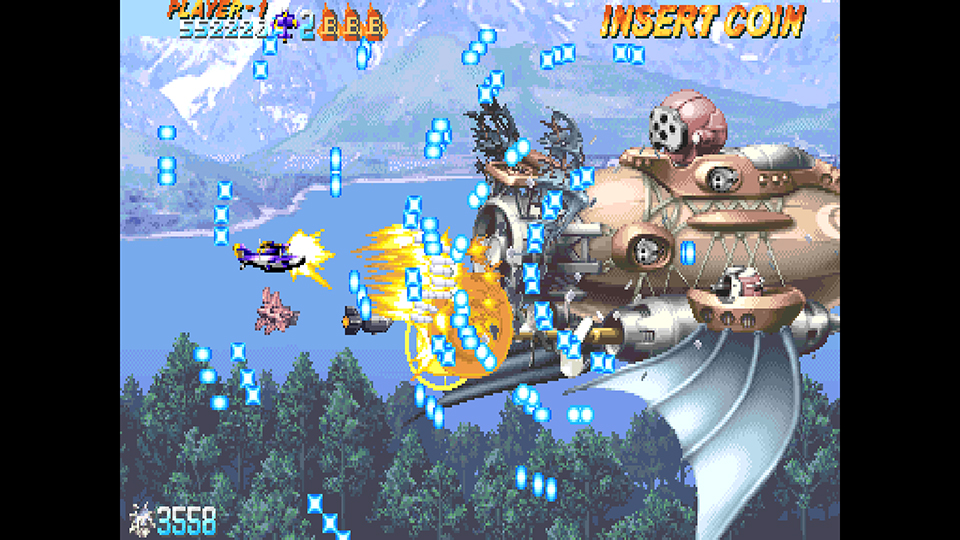
Progear is a horizontal shooter developed by CAVE for Capcom and makes its console debut here. This is one of the most creative and inventive shooters out there and is a very accessible entry in the bullet hell genre. The game has unique mechanics, such as selecting a gunner to go with your pilot and there are multiple ways to attack enemies, and nothing feels overwhelming. It relies on bullet cancellation and subtle gimmicks for both scoring and gameplay and is a deceptively complex game that will keep avid shmup fans engaged. The music is great and the visuals are spectacular, and if there is any weakness, it is that the game feels like it is a bit short. The game is amazing though and will keep you coming back for more, especially on the repeated loops and with different characters to choose from. There were no emulation issues that I could find here.
Platformers
Ghosts ‘n Goblins (1985)
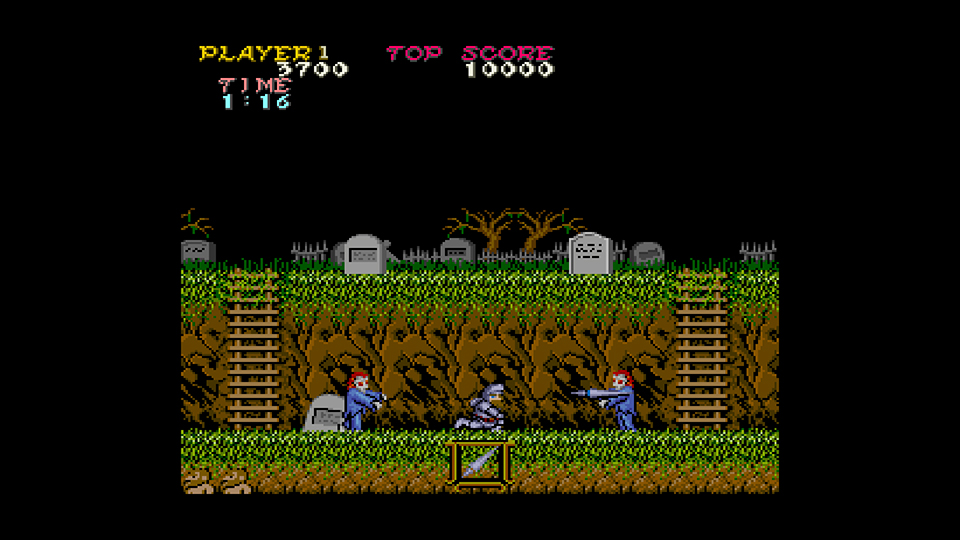
The other bonus game, Ghosts ‘n Goblins was free for a short time and is now included when you buy all the games in the collection. I am going to be honest here and say that after playing the arcade version again for the first time in years, Ghosts ‘n Goblins is nowhere near as good as its reputation is made out to be. The game is not just difficult but feels downright unfair at times, and this was due to the goal of Capcom being to suck as many quarters in as possible. I played as much as I could, but even with all the free continues and rewinding, Ghosts ‘n Goblins just plain sucks. The NES port by Micronics is notable for also having many issues, although this is not seen as much of an issue as with their other games for the NES, the lag due to emulation issues, and poor hit detection in the game make this a poor play. I assumed my problems were just with the NES game, but no, the arcade version is much worse than I had remembered. It is also very likely in retrospect, that I was thinking of Ghoul’s N Ghosts when I wrote my top ten list.
Bionic Commando (1987)
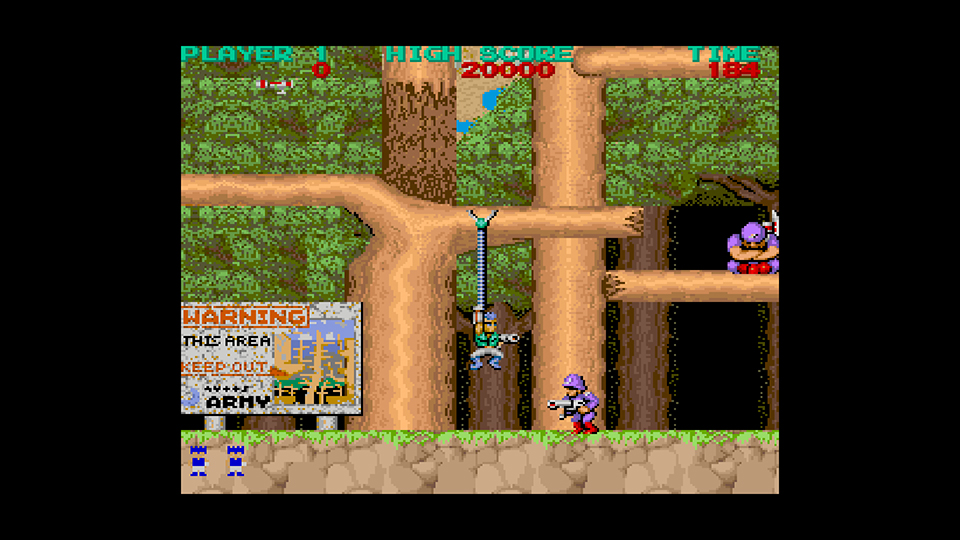
The reason I am using the term Bionic Commando syndrome, Bionic Commando is notorious for its NES port being far superior to the arcade game. Part of the reason is that the actual swinging mechanics feel like something you are fighting against the entire time. Whereas swinging is seamless in the NES port and feels natural, this game feels like an exercise in frustration. The grappling hook is slower and you cannot grapple again until your movement is complete, which means you may end up in a bad position. Capcom had something special here, but the need to quarter munch meant the overall experience just fell short. When given the freedom to redo the game for the NES, Capcom made a true classic and showed that the game’s unique mechanics could be a selling point rather than a hindrance. You might want to play this once for the experience, but otherwise, track down the NES version.
Ghouls ‘n Ghosts (1988)

Unlike its predecessor, Ghouls ‘n Ghosts is a masterpiece of game design. The challenge is still there but actually feels fair this time, and controls feel far more responsive. The hit detection is far better, and while you will die over and over again, you never feel cheated out of your money here. The music and visuals also got a massive step up and everything in general just feels like a polished experience and what the first game could have been. Ghouls ‘n Ghosts received ports to the Genesis/Mega Drive and SuperGrafx but those ports were not 100% faithful, even in the more advanced SuperGrafx port, as changes were made to the experience. This is a fantastic game and I highly suggest spending time with this.
Strider (1989)
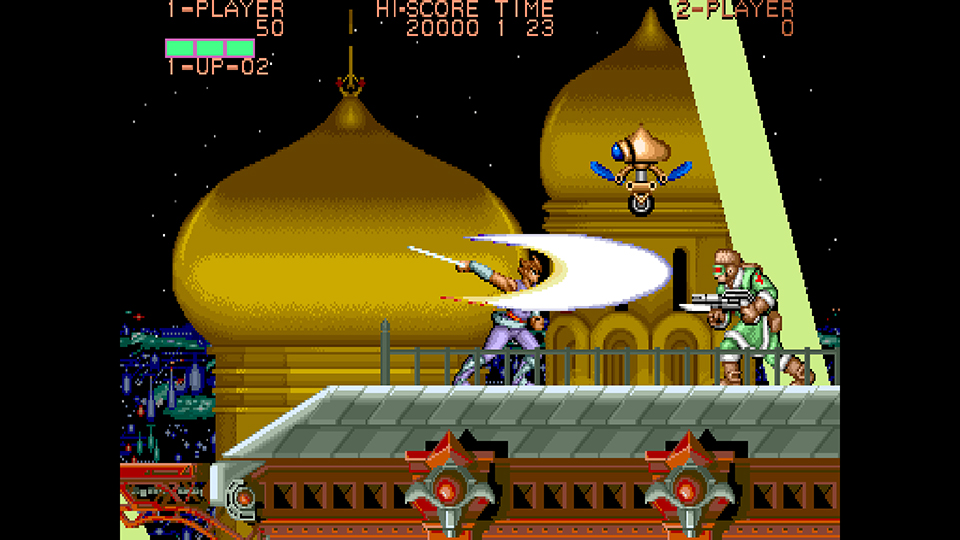
An absolute classic, Strider has held a place in gamers’ hearts for a long time. While the Genesis/Mega Drive port is praised heavily, it was not arcade perfect and there were changes made. In fact, there were no arcade-perfect ports during the 16-bit era, but what we had on Sega’s system was a nice stand-in still. Strider is a brilliant action platformer, with unique stages, amazing gameplay and inventive enemies. There is something about Strider that just clicks completely. While the NES version is considered a bad port and an inversion of Bionic Commando syndrome, this is not the case because the NES version is not a port at all. It is a different game in the series with a completely different design and objective. This NES port also influenced the later 2014 reboot of Strider as well. Sadly there are some emulation issues here, as the sound is off in a few areas, including the iconic opening of the first stage. Still, this doesn’t detract from how amazing the overall game is, and this is a must-play title.
Mega Twins (1990)

This one surprised me a great deal. I had never heard of Mega Twins before, but I have since learned there were ports on the Genesis/Mega Drive and PC Engine and will be tracking these down. This is a side-scrolling hack n slash platformer for one or two players and will instantly bring to mind the classic Wonder Boy games, especially those on the arcades. There is a story here that is superficial at best, but it is the gameplay that is the main draw. Mega Twins actually has RPG elements as well and you have a variety of powerups to find on your quest. You can select your levels to start out and the variety in the levels is amazing. Undersea levels, flying levels and more. This was a complete hidden gem and is one of my favourites in the collection. A must-play game.
Action Games
Pirate Ship Higemaru (1984)
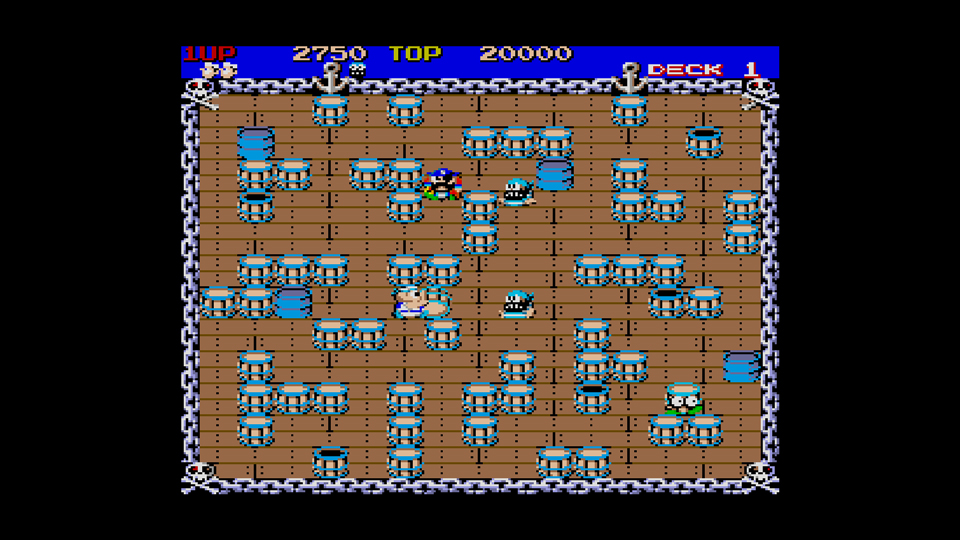
Pirate Ship Higemaru is a basic game but there is a bit of a charm here. The goal of taking out your enemies is simple, but there is an issue with the controls. They feel like they are getting in the way most of the time and the puzzle nature of the game is hampered by them. I think if you can work around the controls, this is a decent puzzle game action game, but I feel that the game has not aged that well, but was probably fine for the time.
Commando (1985)
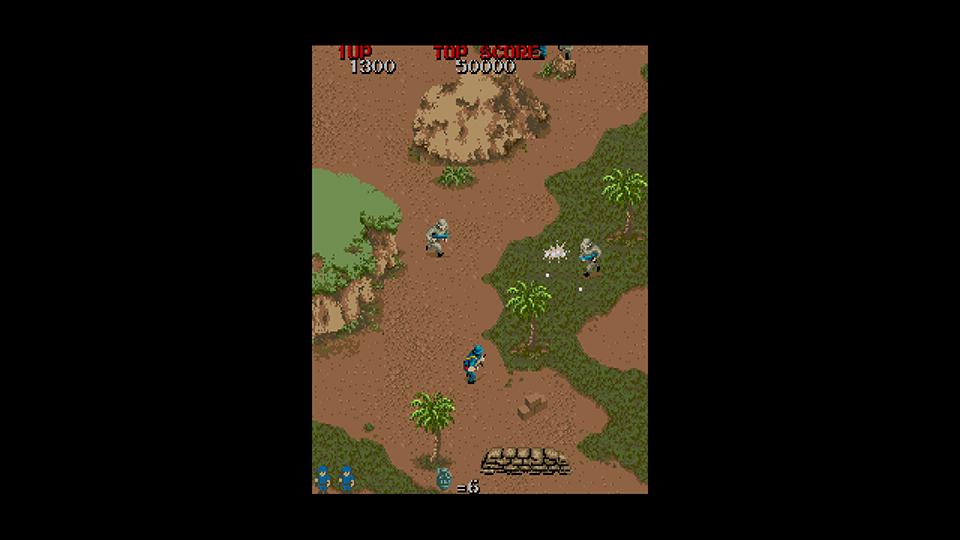
Not based on the Arnold movie we all know and love, Commando is an overhead run ‘n gun game and is decent but nothing about it stands out. This is not to say that the game is bad, but it is just another overhead run ‘n gun game that didn’t really do anything special. I had some issues here with Tate mode as well, with the options not fitting the display completely. There was also a small bit of input delay, but that did not hold the experience back too much. This game is like Vulgus in that it served as the basis for later and better games and that is what I can say about this. It should be noted this game is connected to Bionic Commando and shares characters, but the gameplay change sets things apart.
Trojan (1986) (Tatakai no Banka)

Trojan is a weird game to be sure. The controls use eight-way movement and two action buttons. and you jump by pressing up. The two buttons are instead used for your weapon and your shield. The actual game itself though is a bit all over the place and feels disjointed. The game is not particularly fun and again is an instance of Bionic Commando syndrome. The NES version felt less like a short linear unsatisfying romp with several significant changes made. This includes new power-ups and hidden rooms, but also smoother gameplay and better combat. More notable though is that the NES version had a 1 v 1 mode, which served as Capcom’s fight fighting game. The emulation here was fine for the most part, but there were a few issues with the Tate mode affecting the display. Trojan is also one of the games only available in a Japanese version right now.
Mercs (1990) (Senjo no Okami?)
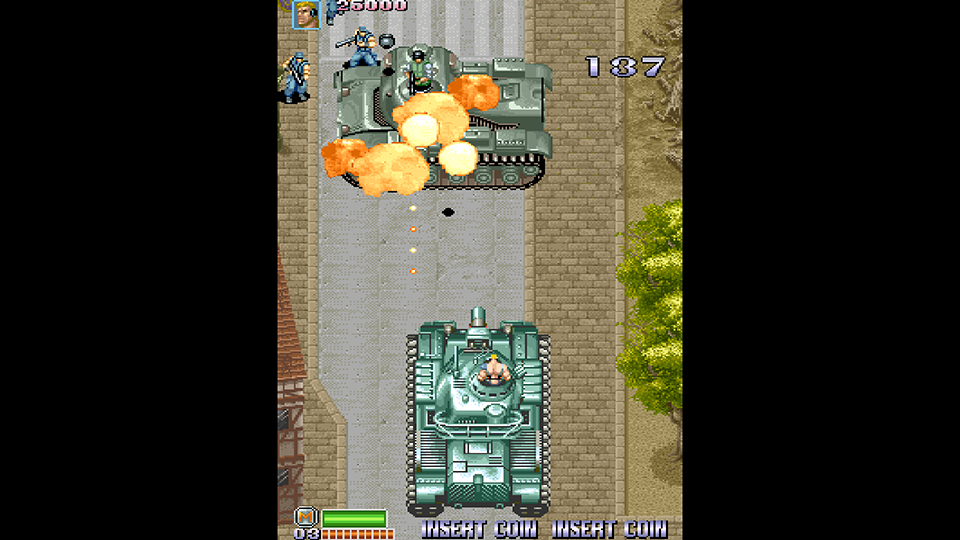
Mercs is the sequel to Commando and is again a title where only the Japanese version is contained in the collection right now. While Bionic Commando is a sequel as well, this is the stylistic and more to the point, a direct sequel. The game is a run ‘n gun but feels better in every way. The action is more intense, there are vehicles you can access, and the stage layout is more diverse. Mercs feels like Capcom learned what was good about Commando and made those parts better. This game was extremely popular in the arcades and the emulation here is spot one, except like Trojan, the version included is the Japanese one. This feels like an odd game to only include the Japanese version for, but the game is still perfectly playable. Mercs is one of the best action games from Capcom in the arcades and a perfect that you can play over and over.
Brawlers
Dynasty Wars (1989)
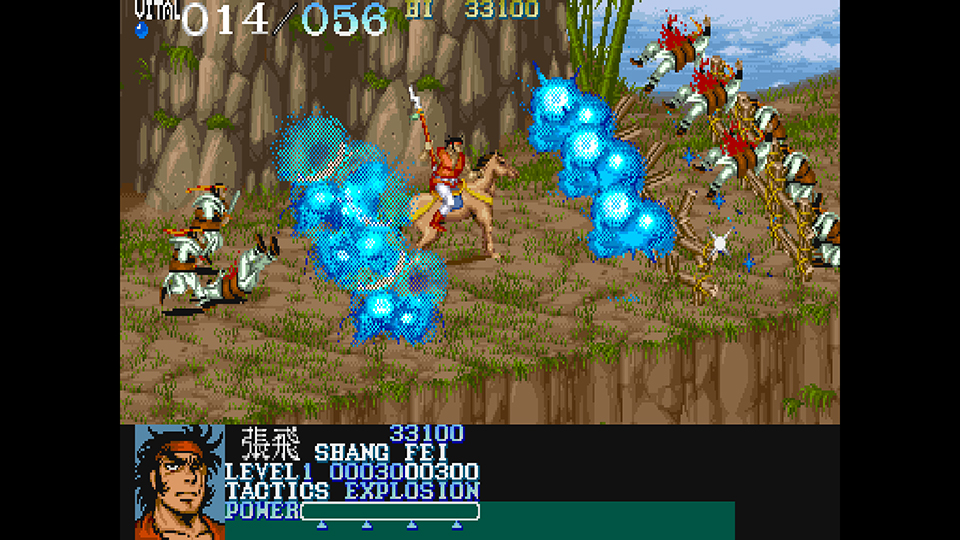
I mentioned above with Section Z that Capcom would later reuse the style of pressing a button to Switch direction to attack and here it is. Dynasty Wars is a brawler where you are on horseback the entire time and must press buttons to attack in the opposite direction and is rather interesting all things considered. It has some good ideas, but the gameplay just does not click fully. The controls take some time to get used to and it feels like there is a learning curve. The game is based on the manga Tenchi wo Kurau, and Capcom later made a separate adaptation for the NES, but that game is a strategy RPG instead of a brawler. There was a port to the PC Engine Super CD, but it did not quite match the arcade and fell somewhat short.
Final Fight (1989)
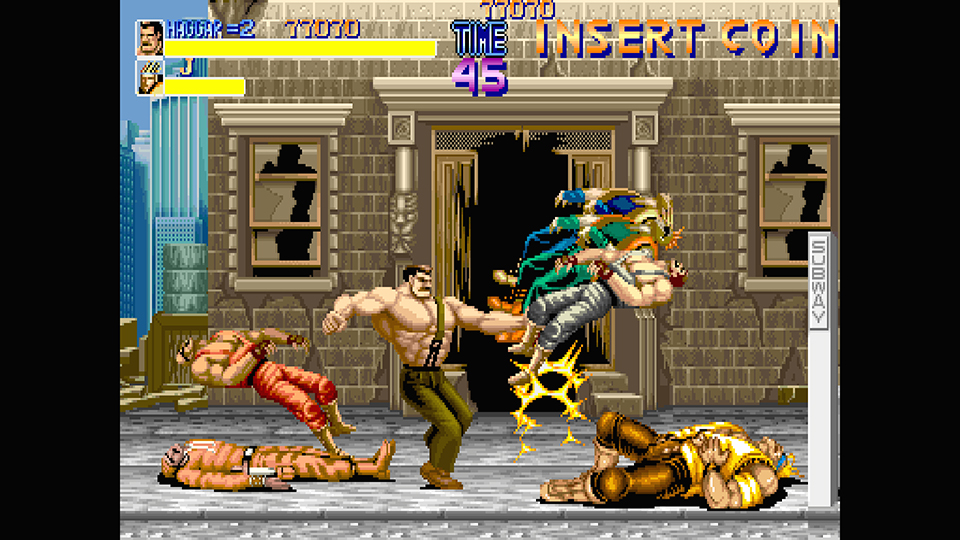
I have to be honest with everyone, but I am not a fan of Final Fight. I can acknowledge how good a game it is and its importance to gaming history, but in retrospect, the gameplay feels a lot more basic and slow compared to what would come after. The SNES sequels gradually improved the quality and added many new features, but the original just feels stale in comparison. That said, I do acknowledge how important this game is and it is fun for a while. I would like to note that while the SNES version was not an example of Bionic Commando syndrome and instead was the opposite, having left out characters and stages, the GBA version was such an example. That version had everything from the arcade ( music notwithstanding), but that version also had the Street Fighter Alpha versions of Guy and Cody with their own storylines and is my preferred way of playing.
Captain Commando (1991)
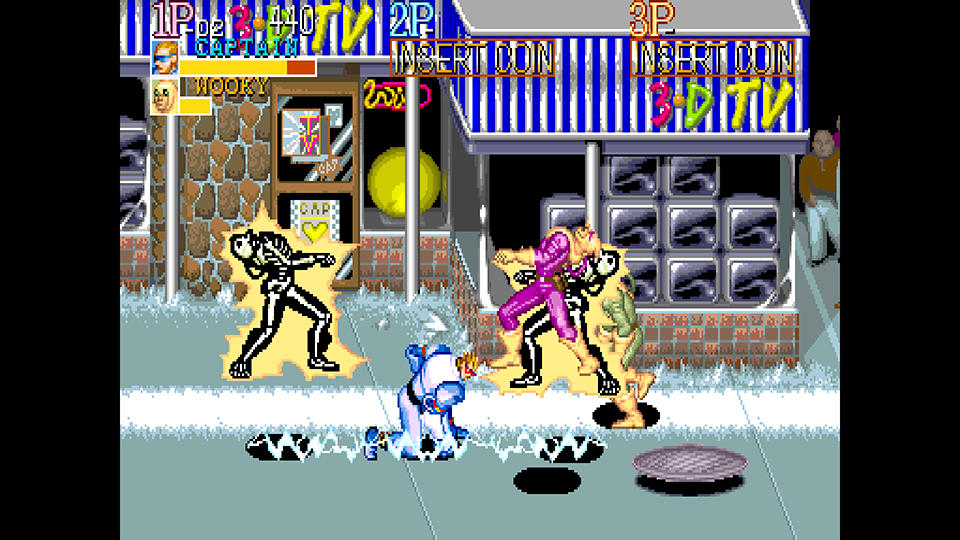
Captain Commando was the original mascot for Capcom and this was his debut game. A four-player brawler, Captain Commando plays very much like Final Fight but better. I feel Capcom managed to fix some of the few issues Final Fight had, and make a number of refinements to the gameplay. The issue I have with Captain Commando is that it is rather slow. I compared this to the SNES version, and that one is even slower and reduced the number of characters you can choose, but the version on PlayStation was better.. Fortunately, Capcom would not abandon the genre and this particular game would get a far superior spiritual sequel.
Warriors of Fate (1992)
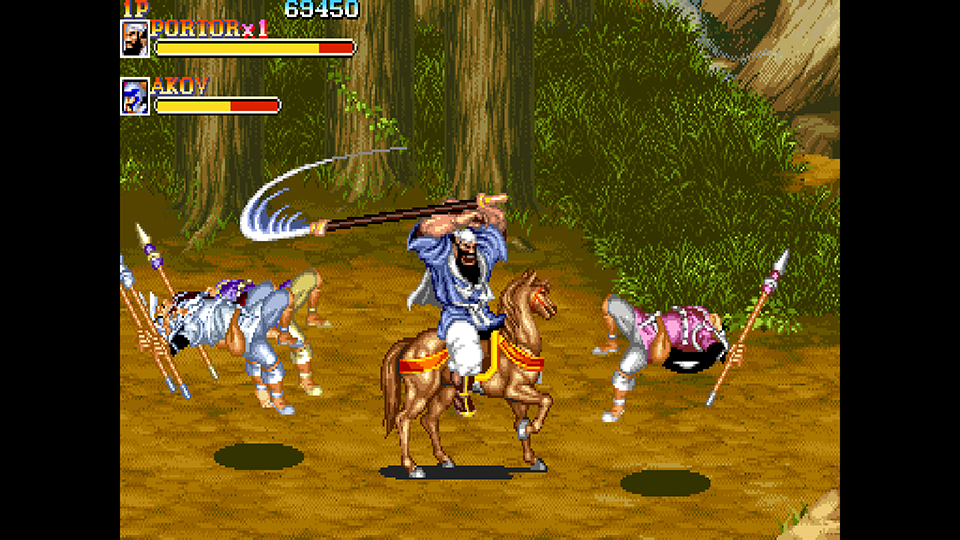
In the Sequel to Dynasty Wars, Capcom took everything that worked about that game and jettisoned what did not. In addition to the vastly improved graphics, the gameplay has some nice overhauling done. You still fight on horseback, but the controls are much easier to understand, and you can get off the horse and fight like a traditional brawler. You can get back on the horse later by taking one from an enemy and the combat is very satisfying here. This is a perfect example of taking a game that had potential but was held back and making everything better. It retains the same issue where controls turn around, but the addition of getting off the horse makes things more satisfying and gives you a sense of choice. The game received an excellent port to the Sega Saturn that I recommend for any Saturn owner, and there was a PlayStation port as well but I cannot comment on that one as I have not played it.
Street Fighter II (1991)
Street Fighter II Turbo: Hyper Fighting (1992)
Super Street Fighter II Turbo (1994)
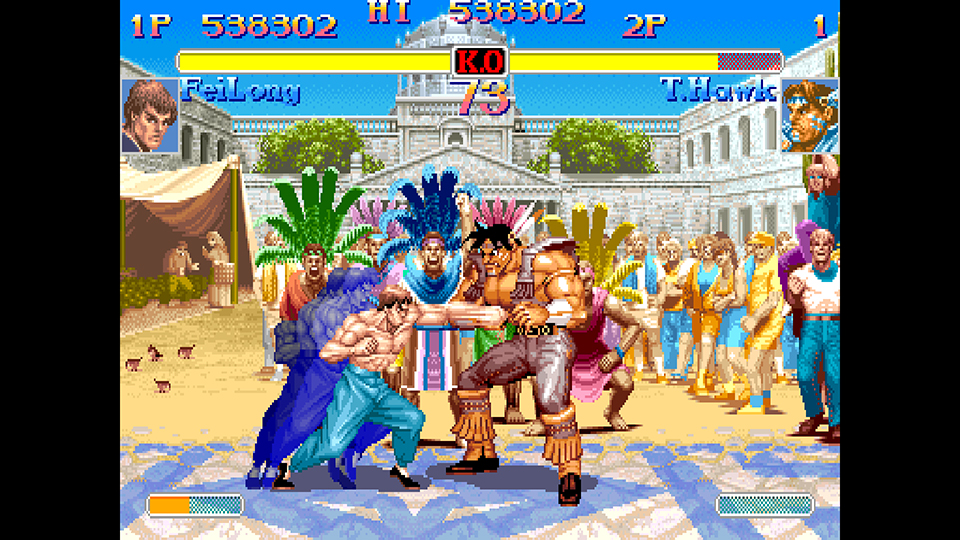
I am doing these three at once because there is not much I can add individually. The Street Fighter series is what laid the groundwork for all modern fighting games with the original Street Fighter II creating a revitalization of the arcades. The iconic characters became a part of pop culture, as did the various audio clips from the game. The excellent gameplay stood out and later incarnations like Hyper Fighting and Super Turbo added more characters, balance changes and combat refinement. These are excellent games but the issue is that the collection lacks any form of online play as I said, and these games are available elsewhere even on Switch, with online versions being included. I do not think three versions of Street Fighter II were needed here, and one would have sufficed.
Armored Warriors (1994) (Powered Gear – Strategic Variant Armor Equipment)
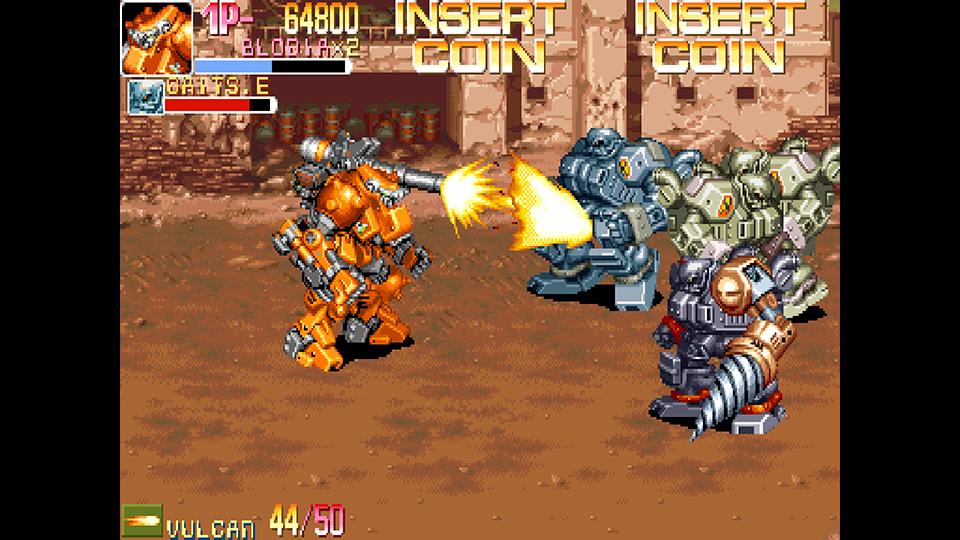
Armored Warriors was one of the later Capcom beat ’em ups and was a much more in-depth experience than the older titles. This game saw you pilot a mech in side-scrolling brawler action while having unique options such as taking on parts of enemy mechs and adding them to your own for new attacks. The game also had Street Fighter inspired command inputs that allowed a lot of variety in the moves you could pull off. There was a story that was actually intriguing as well, and every character felt different. This is another game that is currently only available in its Japanese form on the collection, meaning the story is not available. Still, you should be able to enjoy it and figure out what to do in the various bonus rounds and levels where the game changes things up. This game will constantly throw new things at you and is Capcom doing what they did best.
Cyberbots: Full Metal Madness (1995)
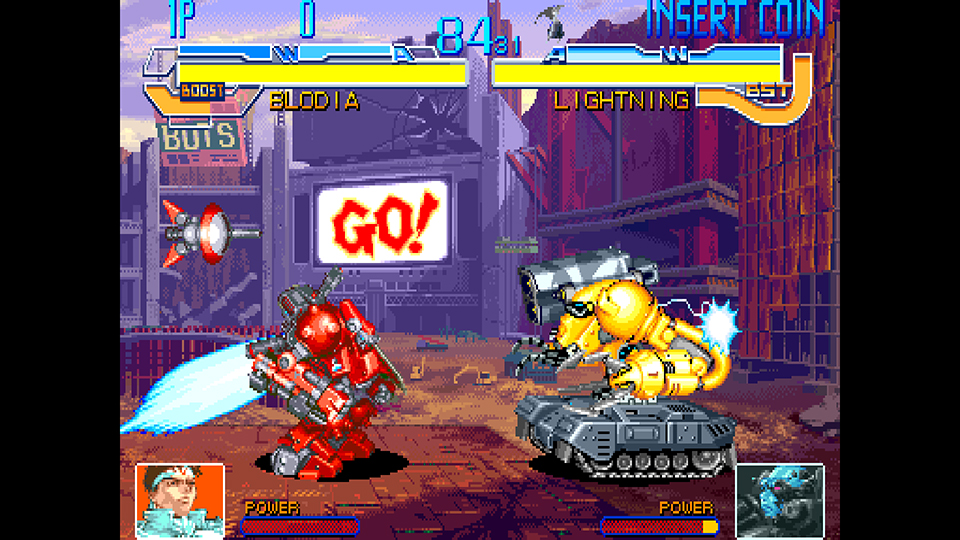
Cyberbots is the sequel to Armored Warriors but is a 1v1 fighting game this time. The game continues the story of Armored Warriors, while pairing it with fast-paced combat. Since Armored Warriors took mechanics from Street Fighter to begin with, this was an easy transition. This is a really fun fighting game, but the lack of online is a killer for me. I would have loved fighting against other players around the world in this game. It is far more fast-paced than the Street Fighter games, so you may need to slow things down or take a moment to adjust, but otherwise, this is a neat fighting game.
Battle Circuit (1997)
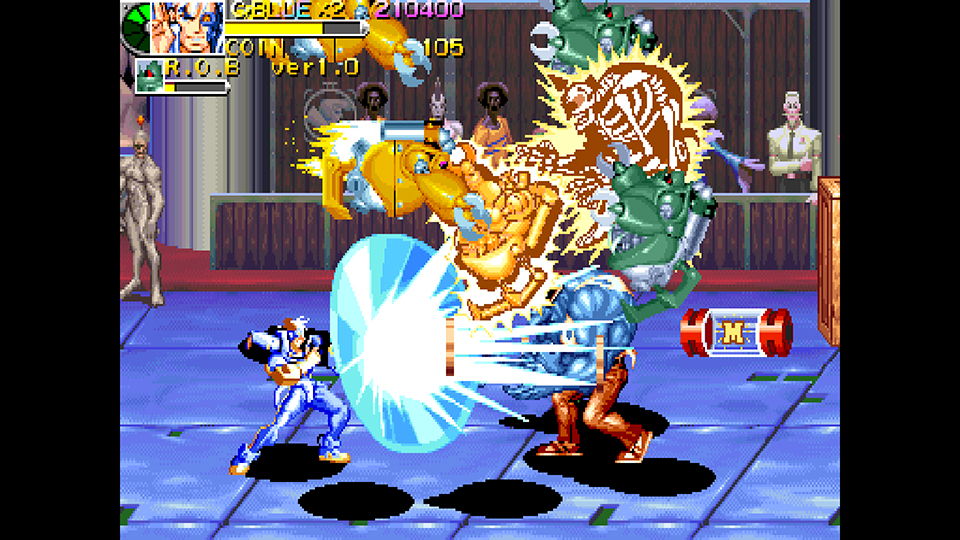
Battle Circuit was the last major beat ’em up for the arcades from Capcom. It had beautiful fluid animation just like Armored Warriors, and also used Street Fighter style inputs to give its combat a fighting game feel. This game is the previously mentioned spiritual sequel to Captain Commando and it feels like Capcom wanted to give that game another shot, but instead used new characters to replace the originals. These new characters are indeed interesting, as, in addition to a stand-in for the Captain, there is also a man-eating plant that you can play as. There was a story here as well, but what stood out more was how the coins dropped in the course of gameplay actually have a use. You use them as currency to buy upgrades such as new moves and more health, giving the game more replay value depending on what you choose. Capcom took the best of all their previous beat ’em ups and combined them for this game, and it was an excellent way to end their arcade beat ’em up run.
Conclusions
This is a great collection but there are a few issues to address here as well. The lack of online really did hamper the enjoyment of some of the games, and many of the games included are easily available on other collections for current systems. There are a number of other games that could have had representation here that would have benefited, including Strider 2, 1943: Kai and the Darkstalkers games. Then there are the issues some have had with censorship in the Street Fighter games as well. Some are understandable, such as the removal of the rising sun in E. Honda’s stage due to its political connotations, but then there was the changing of the flag of Hong Kong to the Flag of the People’s Republic of China in Fei Long’s stage.
I feel Capcom has an overall good product but more variety in the games would have been better, and Capcom has even more arcade games that could have been added, as I mentioned. Adding online would also help improve the replay value of many of these games. I also would like to see Capcom add the localized versions of the games which currently only include Japanese versions in a future update. Also, even though this is an arcade collection I would still like to have seen Capcom have some of the console versions of the arcade games, such as Bionic Commando, Legendary Wings and Section Z, much like SNK did with their SNK 40th anniversary collection so players can see the differences.
Other Comparisons
I would also like to take a moment to compare this collection to the recent Capcom Home Arcade, which was a plug ‘n play arcade stick containing several arcade games. There was overlap here but there were several games only available on the Home Arcade. I would have loved to have seen, Eco Fighters, Alien vs Predator, Capcom Sports Club and Super Puzzle Fighter II Turbo included here as well, though I understand separate licensing would have been needed for Alien vs Predator.
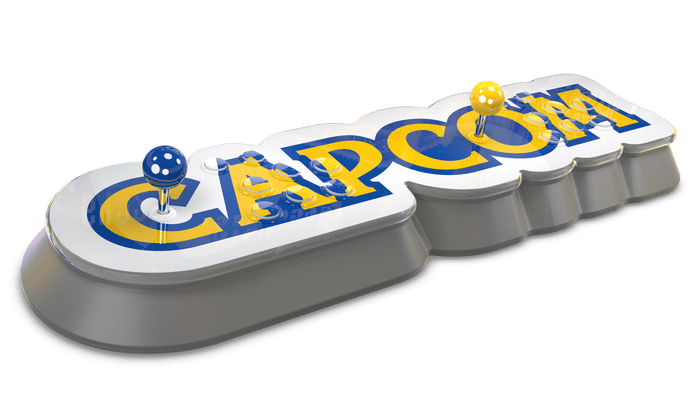
The games available on Capcom Home Arcade are
- 1944: The Loop Master
- Alien vs. Predator
- Armored Warriors
- Capcom Sports Club
- Captain Commando
- Cyberbots: Fullmetal Madness
- Darkstalkers: The Night Warriors
- Eco Fighters
- Final Fight
- Ghouls ‘n Ghosts
- Giga Wing
- Mega Man: The Power Battle
- Progear
- Street Fighter II’ Hyper Fighting
- Strider
- Super Puzzle Fighter II Turbo
Flip Grip Compatibility
I also want to note that a number of titles from the collection are compatible with the Nintendo Switch Flip Grip
- 1943: The Battle of Midway
- 1942
- Commando
- Legendary Wings
- 1941: Counter Attack
- Mercs
- Varth: Operation Thunderstorm
- 19XX: The War Against Destiny
- 1944: The Loop Master
Final Thoughts
Still, I did have a good time playing the games I enjoyed and the four games that stood out the most to me were Varth: Operation Thunderstorm for the shmups, Mega Twins for platformers, Mercs for action games and Armored Warriors for brawlers. These were the games that stood out as the best of the categories and the ones I recommend for everyone to play. You can not go wrong with those four, even with all the amazing other games. I do feel Capcom Arcade Stadium, even with its flaws is very much worth getting and I must highly recommend it. The three bundles all have excellent games and while bundles two and three stand out more, even the first bundle has plenty to offer. You will have a lot to enjoy here, and history to explore.

